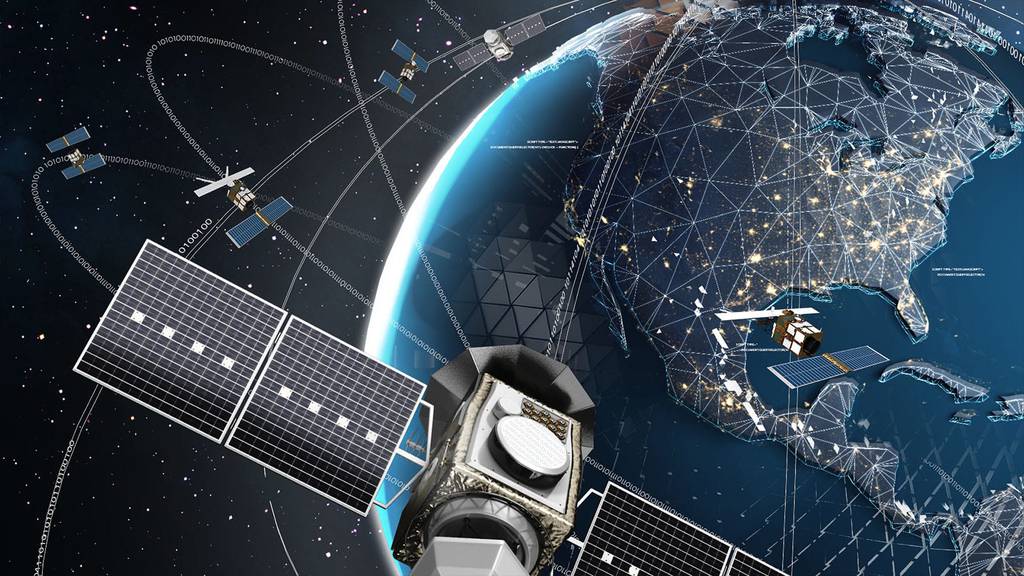The U.S. Space Force’s $29.4 billion fiscal year 2025 budget request is $600 million lower than what it asked for in FY24 — a dip that follows three years of steady growth for the fledgling service.
Air Force Secretary Frank Kendall told reporters March 8 that the smaller budget request – which is, like the rest of the Defense Department, constrained by funding limits set in the 2023 Fiscal Responsibility Act — means the service won’t be able move as fast as he’d like to build more resilient systems that can counter space threats from China and Russia.
“China has fielded a combination of anti-satellite capabilities and space-based targeting capabilities — so they’re threatening our space assets and they’re threatening our joint force,” he said during an embargoed media briefing. “We’ve got to respond to that. . . . I’d like to move faster on that than we currently are.”
The Space Force’s budget has nearly doubled since it was created in December 2019. Its fiscal year 2021 request for $15.4 billion jumped to $30 billion by FY-24. That growth was due largely to the consolidation of space systems and personnel under the service’s purview.
Service officials, including former Vice Chief of Space Operations Gen. David Thompson, have said the Space Force’s funding must continue to increase as it takes on new responsibilities and missions.
“The budget needs to grow because there are still more missions that are migrating to space,” Thompson told C4ISRNET in December. “The challenge is, in this environment, defense budgets are likely not to grow significantly in the near future the way they have in the recent past. "
Kendall said the service is making progress toward improving the resilience of its systems. He pointed to the shift toward building smaller satellites in large quantities across key mission areas like missile warning and communications.
However, he wants to be able to invest more in other mission areas — like positioning, navigation and timing — and improve the service’s portfolio of offensive space programs, which are largely classified.
“We need to find a way to have PNT be more resilient, and I think there are some additional communications things that we need to do,” he said.
Funding modernization
The largest portion of the Space Force’s spending request, $18.7 billion, would fund the development of satellites, ground systems and other supporting technology and modernization of existing capabilities. That’s about $300 million less than FY24, due in part to the Space Force’s classified portfolio.
According to Kendall, a portion of the service’s FY25 budget is part of a separate account known as “pass-through” funding, which typically goes to outside organizations like the intelligence community. Kendall would not confirm whether or how much Space Force funding had shifted from its base budget to this account, but said that part of the service’s smaller request is owed to some of its funding being tagged as pass-through money.
Elsewhere in its research and developing account, the Space Force requests $4.7 billion to develop satellites in multiple orbits that can spot and warn of traditional and advanced missile threats.
Within that portfolio, the service proposes $2.1 billion for the Next-Generation Overhead Persistent Infrared program. The effort is the successor to today’s Space-Based Infrared System, which detects and tracks ballistic missiles. It includes two satellites built by Lockheed Martin that will reside in geostationary orbit, about 22,000 miles above Earth, and two Northrop Grumman-built polar satellites destined for a highly elliptical orbit.
The Space Force also wants $2.6 billion for its Resilient Missile Warning and Tracking program, which aims to field satellites in low Earth orbit, about 1,200 miles above the planet, and medium Earth orbit, at an altitude of between 1,200 and 22,000 miles.
Funding for the MEO portion of the program would support initial satellite development and ground support. The LEO funding, which sits around $1.7 billion, would go toward the Space Development Agency’s efforts to launch 28 satellites in FY25.
Another $1.7 billion would support other SDA activities, including expansion of the agency’s fleet of communications, or data transport, satellites.
The Space Force’s request includes $1 billion for the Evolved Strategic Satellite Communications program, which is developing secure, survivable communications capabilities for strategic missions. The satellites are designed to withstand nuclear attack, and the service wants to award a contract and begin production in 2025.
The request also calls for $237 million to start a new program, Protected Tactical SATCOM Global. Initial budget documents did not describe the effort in detail.
The Space Force’s $4.3 billion procurement account — which is about $400 million smaller than it was in fiscal 2024 — would fund 11 launches, down from 15 planned missions in FY24. Four of those launches will carry SDA satellites and the remaining 7 will be for Space Force missions.
Another $527 million, if approved, will buy two GPS IIIF satellites, a modernized version of navigation spacecraft designed to provide better accuracy and anti-jam capabilities. The service expects to start launching the satellites in 2027.
Courtney Albon is C4ISRNET’s space and emerging technology reporter. She has covered the U.S. military since 2012, with a focus on the Air Force and Space Force. She has reported on some of the Defense Department’s most significant acquisition, budget and policy challenges.








